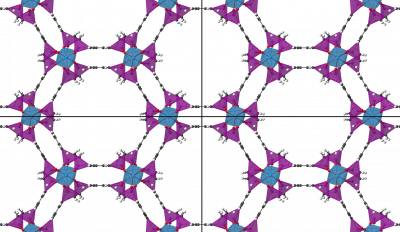J. Hynek, P. Brázda, J. Rohlíček, M. G. S. Londesborough and J. Demel*
Angew. Chem. 2018, 130, 5110 –5113
Abstract: Metal–organic frameworks (MOFs) are a chemically and topologically diverse family of materials composed of inorganic nodes and organic linkers bound together by coordination bonds. Presented here are two significant innovations in this field. The first is the use of a new coordination group, phenylene-1,4-bis(methylphosphinic acid) (PBPA), a phosphinic acid analogue of the commonly used terephtalic acid. Use of this new linker group leads to the formation of a hydrothermally stable and permanently porous MOF structure. The second innovation is the application of electron-diffraction tomography, coupled with dynamic refinement of the EDT data, to the elucidation of the structure of the new material, including the localization of hydrogen atoms.

